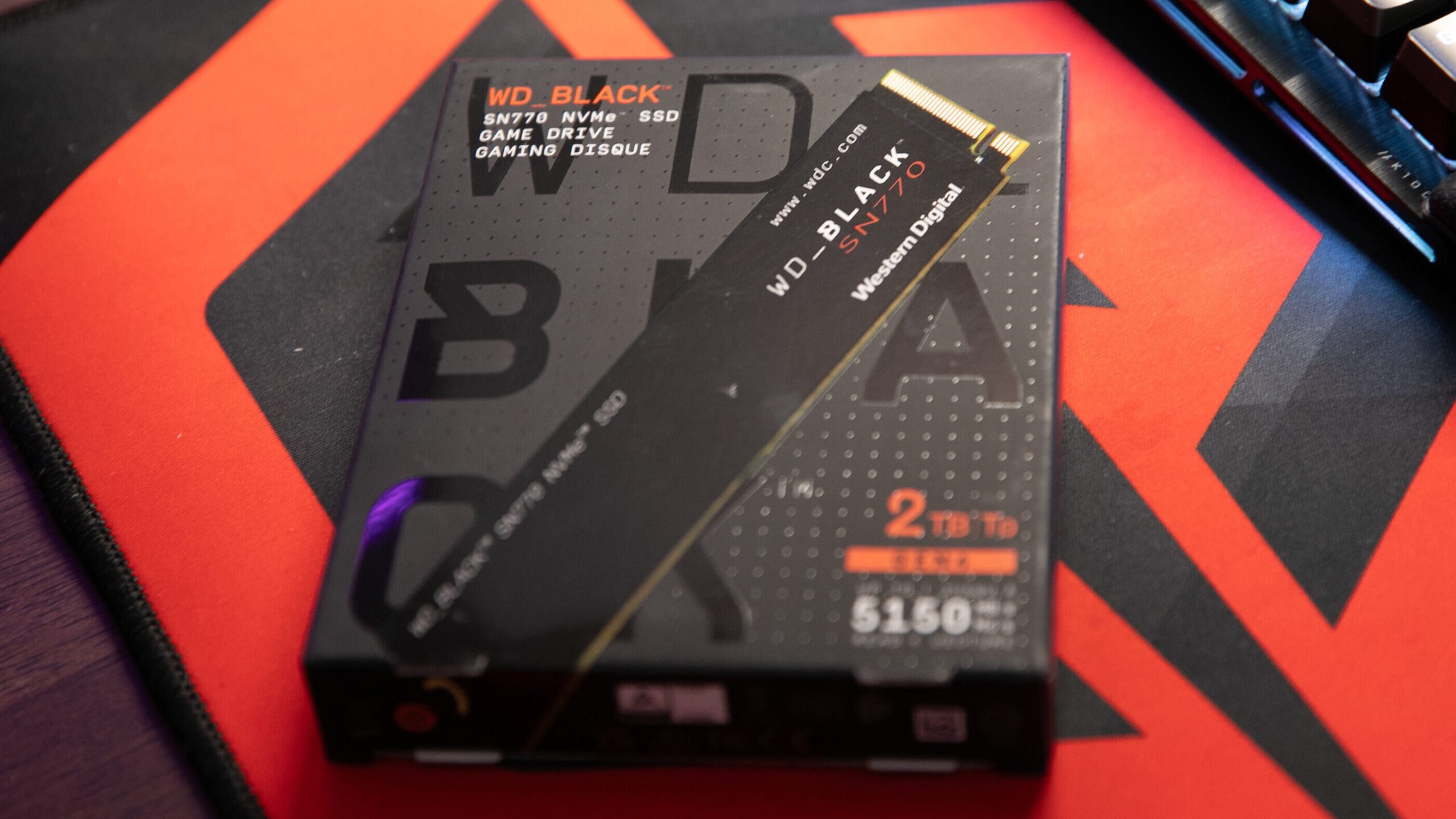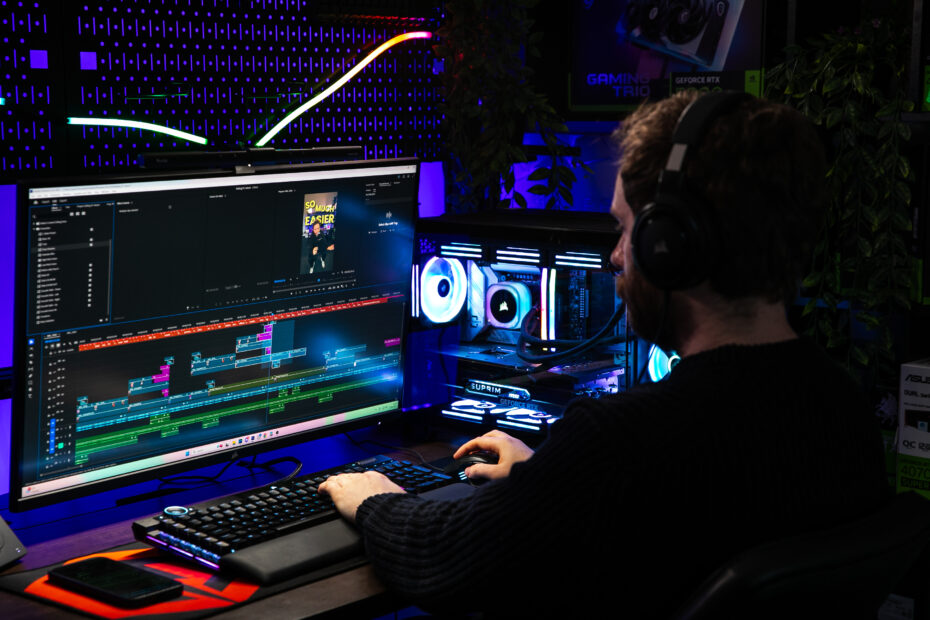Editing PCs and laptops are specially designed to handle the demanding tasks of photo and video editing. Whether you are a photographer working with high-resolution images, a video editor creating 4K content, or a social media creator editing reels and TikToks, having the right hardware is essential.
This guide will help you understand what makes an editing PC different from other types of computers, plus which specifications you should prioritise in your search for the perfect editing computer. We’ll cover:
- What is an editing PC?
- What specs to look out for in an editing PC
- Should I get a desktop or laptop for editing?
- Best laptops for editing
- Best PCs for editing
- Editing software and hardware requirements
What is an editing PC?
An editing PC is a type of desktop PC specifically optimised for creative workloads rather than gaming or general office use. Unlike gaming PCs, which focus on high refresh rates and powerful GPUs for real-time rendering, editing machines prioritise processing power, RAM, and storage speed to handle large files efficiently. If you already have a gaming PC and want to know if you can use it for editing purposes, check out our blog post on the topic for the best advice.
What specs to look out for in an editing PC?
While gaming and editing PCs share some similarities, an editing system needs a powerful CPU for rendering, substantial RAM for handling large projects, and fast storage to avoid bottlenecks. A strong GPU is still important, particularly for video editing and 3D work, but it plays a slightly different role compared to gaming machines.When handling large files or editing for long periods of time, you may benefit from a PC with an advanced cooling system such as Hyper Liquid Cooling PCs to prevent overheating and maintain a high performance.
Processor (CPU)
The CPU is the heart of an editing system, responsible for rendering and encoding video, applying photo edits, and running editing software smoothly. Look for multi-core processors with high clock speeds, as most editing applications benefit from multiple cores and threads. Intel Core i7, i9, AMD Ryzen 7, and Ryzen 9 processors are great choices, while workstation-grade CPUs like AMD Threadripper or Intel Xeon are ideal for professional workloads.
Memory (RAM)
Editing requires a large amount of RAM, especially when working with high-resolution files or multi-layered projects. For photo editing, 16GB is a good starting point, but 32GB or more is ideal. For video editing, particularly at 4K or higher, 32GB to 64GB is recommended to ensure smooth playback and rendering.
Graphics Card (GPU)
While gaming relies heavily on the GPU, editing benefits from GPU acceleration in certain software. Programs like Adobe Premiere Pro and DaVinci Resolve use GPU power for rendering, effects, and playback. A mid-range GPU like the NVIDIA RTX 4060 or AMD RX 6700 XT is suitable for most editors, but professionals working with 4K or 3D rendering may need higher-end cards like the RTX 5080 or 5090.
Storage (SSD vs. HDD)

Fast storage via SSD or HDD is crucial for editing, as it directly impacts file loading times, exporting speeds, and overall project responsiveness. An SSD is highly recommended, with NVMe SSDs offering the best performance due to their significantly faster read and write speeds compared to SATA SSDs or traditional HDDs. A 1TB NVMe SSD is a great starting point for most editors, ensuring smooth operation of editing software and quick access to media files.
However, for those working with high-resolution videos, large image files, or extensive project libraries, additional storage is essential. A secondary SSD can help with active projects, while a high-capacity HDD (such as 4TB or more) is ideal for long-term storage and archiving. Many professionals also use external SSDs for portability and backup, ensuring their work remains safe and accessible across multiple devices.
Display
For laptops, the display is just as important as internal components. For desktops, choosing the right monitor is key. A high-resolution (at least 1920×1080, preferably 4K), colour-accurate screen with a wide colour gamut (100% sRGB or AdobeRGB) is ideal for accurate editing. Look for IPS or OLED panels for the best colour reproduction.
Should I get a desktop or laptop for editing?
Deciding between a desktop and a laptop depends on your workflow. If you need portability, a powerful editing laptop is a great option, but if performance is your priority, a desktop will offer better specs for the same price. Whichever you choose, remember that with a custom build, you can prioritise the components that matter most to you — whether that’s a powerful CPU, more RAM, or additional storage.
Best laptops for editing
- Photo editing: A laptop with a high-quality display, at least 16GB of RAM, and a fast SSD.
- Video editing: A laptop with a high-end CPU, at least 32GB of RAM, and a discrete GPU.
- Budget options: Look for laptops with Ryzen 7 or Intel i7 CPUs, 16GB RAM, and a mid-range GPU.
Best PCs for editing
- Photo editing: A strong CPU and at least 32GB of RAM, with a colour-accurate monitor.
- Video editing: A high-core-count CPU, 64GB RAM, and a powerful GPU.
- 3D rendering: A workstation-class CPU and GPU, with ample RAM and storage.
Editing software & hardware requirements
Different editing programs have varying hardware needs, so it’s best to do your research and choose the right program for your requirements — and a machine that can handle the program you’ll use most. Here’s a quick overview of some of the most popular editing programs:
- Adobe Photoshop: Needs a fast CPU, at least 16GB RAM, and a colour-accurate display.
- Adobe Premiere Pro: Benefits from a high-core-count CPU, strong GPU, and 32GB+ RAM.
- DaVinci Resolve: Requires a powerful GPU for real-time playback and colour grading.
- InShot & FlipaClip: Can run on mid-range systems but benefit from faster storage and RAM.
Choosing the right PC or laptop for editing depends on your specific needs, whether you’re working with photos, videos, 3D projects, or animation. A balance of CPU power, RAM, GPU performance, and fast storage is key to a smooth workflow. By focusing on the right specifications, you can ensure your system meets your editing demands efficiently.
For more tips, be sure to read our PC buying guide. If you’re struggling to find a PC or laptop that suits your requirements, why not create your own? Building a custom PC or choosing a custom-configured laptop allows you to tailor the specs to your exact needs, and can even be better value compared to buying a high-end pre-built system. You can also find high-quality monitors as well as keyboards, mice, and more in our Gear Store.
